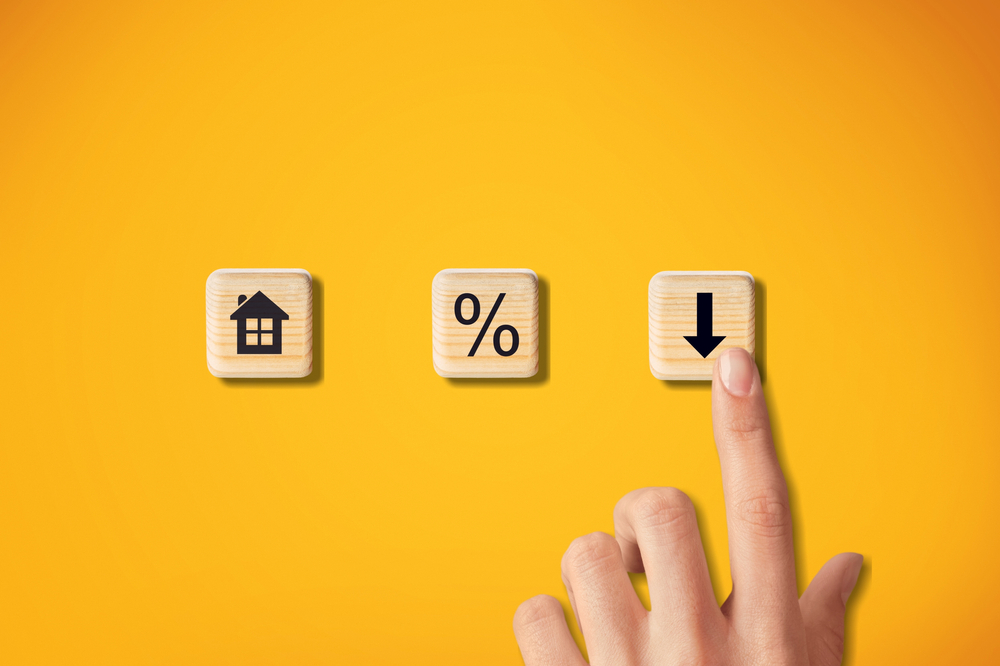Household Bills
Average UK house price falls by 1.2% to £285,000 in March

Average house prices in the UK fell 1.2% to £285,009 from February to March, Government figures reveal.
The Office for National Statistics (ONS) house price index showed that the monthly change was sharper than the 0.5% month-on-month decline in average prices recorded last year.
Compared to last year, house prices were up by 4.1%, a slowdown from the 5.8% annual growth recorded in February.
Average house prices were up by around £11,000 compared to March last year, but approximately £8,000 lower than the peak in November 2022 when prices reached £294,910.
Matt Baldock, director of Chelmsford-based estate agents, Charles David Casson, said: “Though the annual rate of house price growth fell in March compared to February, overall the sales market in 2023 to date has held up better than most predicted following the havoc wreaked by the mini Budget.”
He said buyers had accepted that current mortgage rates were the “new norm”.
Karen Noye, mortgage expert at Quilter, added: “With the economic path now looking a little more predictable, house prices may remain stagnant, dropping marginally over the next few months before regaining momentum when the worst of the cost-of-living crisis is behind us.”
Country and regional differences
Northern Ireland saw the strongest growth in average house prices annually, with a 5% rise to £172,005. This was followed by Wales where prices increased by 4.8% to £214,174 and England where prices rose by 4.1% to £304,193.
The country to see the smallest rise in house prices was Wales, with a 3% increase to £214,174.
Month-on-month declines were recorded across all countries except Scotland, with Northern Ireland seeing a 1.8% dip, England reporting a 1.5% fall, and prices in Wales falling by 0.6% from February to March. In Scotland, average house prices rose by 0.7% on a monthly basis.
Regionally, the East of England saw the biggest monthly drop in house prices with a 2% fall to £351,898, followed by London with a 1.7% decrease to £523,325. The South East saw the softest decline with a 0.4% fall to £394,543.
Property and buyer types
Detached houses rose the most in price with a 5.3% annual difference to £453,949. Semi-detached houses saw an increase of 4.8% year-on-year to £277,291.
Terraced houses, flats and maisonettes saw annual growths of 3% to £229,752 and £227,925 respectively.
First-time buyers paid 3.8% more for their properties than last year at £236,682, while former owner-occupiers saw a 4.3% rise to £334,480.
A return in confidence
Jeremy Leaf, north London estate agent and a former Royal Institute of Chartered Surveyors (RICS) residential chairman, said: “’Prices are up a bit or down a bit with no significant changes expected over the next few months. Buyers and sellers are finally shrugging off the worst effects of last September’s mini Budget, with the market in a better place than it was at the end of last year.
“Confidence is slowly returning, particularly as inflation is beginning to fall and expectations grow that interest rates are at or near their peak.”
Emma Cox, MD of real estate at Shawbrook, added: “Rising interest rates and economic pressures have not stood in the way of many buyers or sellers’ ambitions as the housing market shows strong resilience and house price rises in March.
“Reports that the economic outlook isn’t as bleak as previously forecast has prompted a return in confidence and demand. And while buyers are likely to remain relatively cautious moving forwards, as mortgage rates remain high in line with rising interest rates, it’s encouraging to see these signs of optimism back in the market.